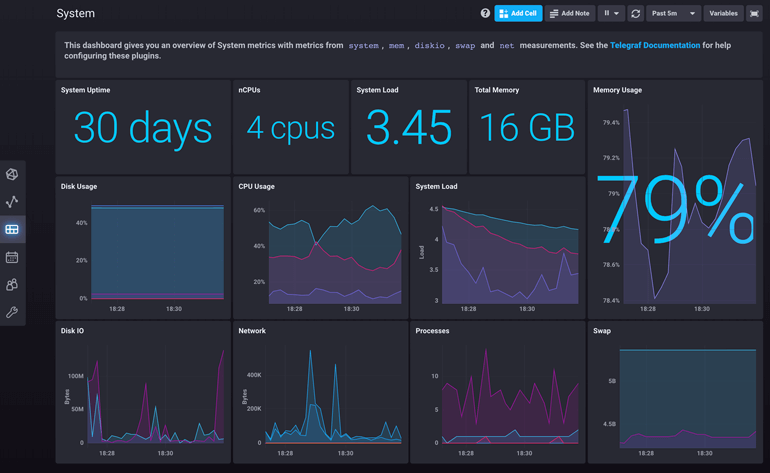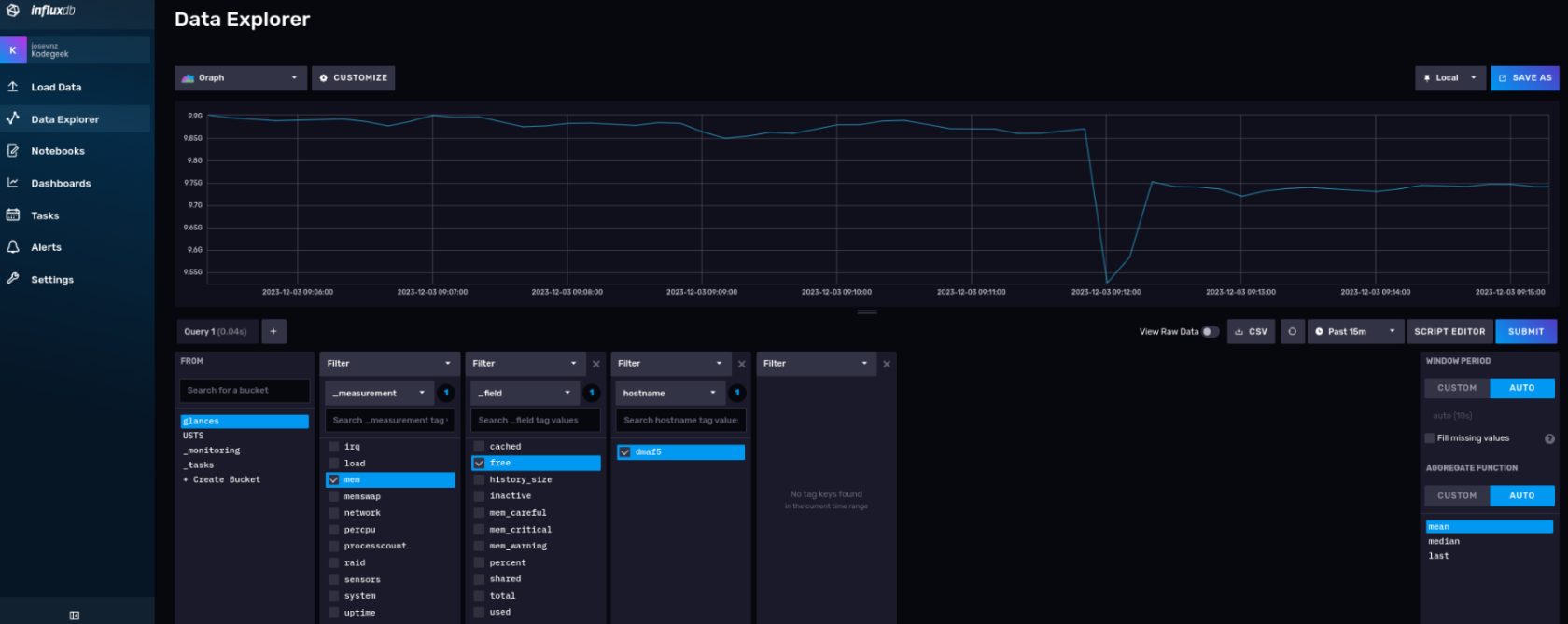What is InfluxDB
Docker InfluxDB module WHMCS
Order now | Download | FAQ | n8n
InfluxDB is an open-source time-series database (TSDB) designed for storing and analyzing large volumes of time-stamped data. Developed by InfluxData, it is optimized for fast read and write operations, making it a popular choice for monitoring, analytics, and real-time processing of metrics, events, and sensor data.
Key Features of InfluxDB
-
High Performance – Optimized for high-speed ingestion and querying of time-series data.
-
Schema-less Design – Uses a flexible data model that automatically adapts to new measurements.
-
Powerful Query Language (Flux & InfluxQL) – Provides SQL-like querying capabilities and advanced data processing functions.
-
Retention Policies & Downsampling – Automatically manages data lifecycle and reduces storage costs.
-
Built-in Processing & Alerting – Supports real-time aggregations, transformations, and alerting with Kapacitor.
-
Scalability – Works in single-node and distributed cluster deployments.
-
Integrations & API Support – Compatible with Grafana, Telegraf, Prometheus, and many programming languages.
-
Edge & IoT Support – Can run on low-power devices for industrial and IoT applications.
Where is InfluxDB Used?
InfluxDB is widely used in various domains requiring real-time data collection and analysis:
1. IT Infrastructure Monitoring
-
Stores metrics from servers, applications, and network devices.
-
Works with Telegraf and Grafana to provide dashboards for system monitoring.
2. Application Performance Monitoring (APM)
-
Tracks API response times, request latencies, and user interactions.
-
Integrates with logging and tracing tools like OpenTelemetry.
3. Industrial IoT & Sensor Data Processing
-
Collects and analyzes sensor readings from smart factories and energy grids.
-
Used in predictive maintenance and operational analytics.
4. Cloud & DevOps Observability
-
Monitors Kubernetes, Docker containers, and cloud services.
-
Helps DevOps teams track CI/CD pipelines and system performance.
5. Financial & Business Analytics
-
Stores stock market data, transaction logs, and business KPIs.
-
Enables real-time analytics and predictive modeling.
How InfluxDB Works
InfluxDB operates as a time-series database with a focus on speed and scalability:
-
Data Ingestion: Accepts data via HTTP, TCP, MQTT, and native clients.
-
Storage & Indexing: Uses a columnar storage format optimized for time-series queries.
-
Querying & Processing: Supports InfluxQL (SQL-like syntax) and Flux for complex transformations.
-
Retention & Downsampling: Applies data retention policies and automatic aggregation for efficient storage.
-
Visualization & Alerting: Connects with Grafana, Chronograf, and Kapacitor for monitoring and notifications.
Data Sources Compatible with InfluxDB
InfluxDB supports multiple data sources, making it a versatile choice for real-time analytics:
-
System Monitoring: Telegraf, Prometheus, Nagios, Zabbix
-
IoT & Industrial Data: MQTT, OPC-UA, Modbus, ThingsBoard
-
Cloud & DevOps Tools: Kubernetes, Docker, AWS CloudWatch, Google Cloud Monitoring
-
Application Logs & Traces: OpenTelemetry, Fluentd, Loki
-
Business & Financial Data: SQL databases, Kafka, stock market feeds
Conclusion
InfluxDB is a powerful time-series database tailored for high-speed data collection and analytics. With its flexible schema, scalable architecture, and integration with various monitoring and visualization tools, it is an excellent choice for IT operations, IoT applications, business intelligence, and real-time observability. Whether you're tracking system performance, analyzing financial trends, or processing industrial sensor data, InfluxDB provides a reliable and efficient solution.



No Comments